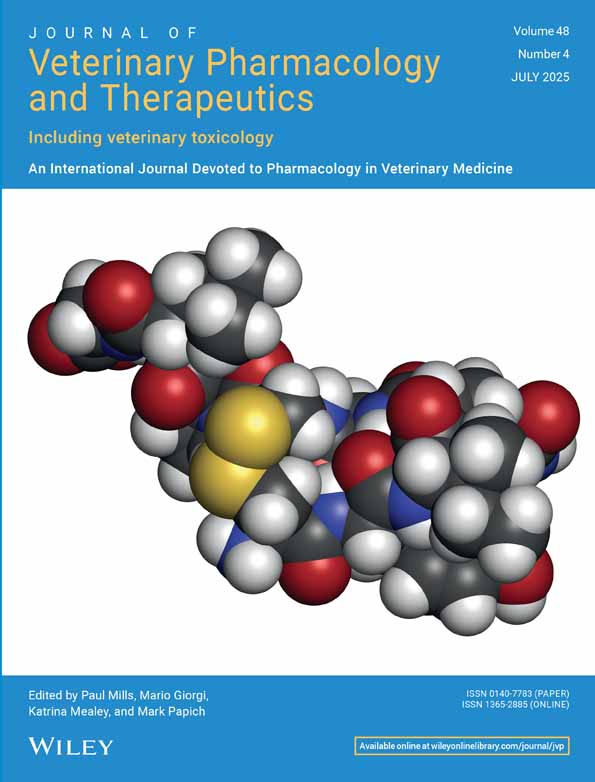Pharmacokinetics of Ampicillin-Sulbactam in Azotemic and Non-Azotemic Dogs
Funding: This work was supported by College Research Council Grant.
ABSTRACT
Previous research has shown that azotemic dogs have a lower clearance and higher drug plasma concentrations of ampicillin compared to healthy dogs. The objective of this study was to determine the pharmacokinetics of ampicillin-sulbactam after multiple intravenous doses in hospitalized azotemic and non-azotemic dogs. This prospective study included 29 client-owned dogs; 19 azotemic and 10 non-azotemic. Ampicillin-sulbactam was administered at a combined dose of 22 mg/kg intravenously every 8 h for up to 5 days. Blood samples were obtained at baseline (prior to administration of the first dose of ampicillin-sulbactam), and 1-, 4-, and 8-h post-ampicillin-sulbactam administration each day. Plasma ampicillin was measured using LC-MS and non-compartmental pharmacokinetic modeling and dose interval modeling were performed. Plasma ampicillin exposure (azotemic mean 214.5 ug/mL × h ± 110.8, non-azotemic mean 60.3 ± 35.7; p < 0.0009) and half-life (azotemic mean 3.9 h ± 2.4, non-azotemic mean 1.5 h ± 0.3; p < 0.00001) were statistically greater in azotemic dogs compared to non-azotemic dogs. Single dose interval modeling predicted that 100% of azotemic dogs would have > 50% of the dosing interval with plasma concentrations > MIC (MIC = 2) with q12 h dosing and 79% of azotemic dogs would have > 50% of the dosing interval with plasma concentrations > MIC (MIC = 8) with q12 h dosing. Comparatively, 20% of non-azotemic dogs were predicted to have > 50% of the dosing interval with plasma concentrations > MIC (MIC = 2) with q12 h dosing and 0 non-azotemic dogs would have > 50% of the dosing interval with plasma concentrations > MIC (MIC = 8) with q12 h dosing. This study demonstrated that q12-h dosing of ampicillin-sulbactam in azotemic dogs over multiple days of administration is sufficient to reach the PK-PD target (> 50% of dosing interval > MIC) against susceptible bacteria.
Conflicts of Interest
The authors declare no conflicts of interest.
Open Research
Data Availability Statement
The data that support the findings of this study are available from the corresponding author upon reasonable request.




